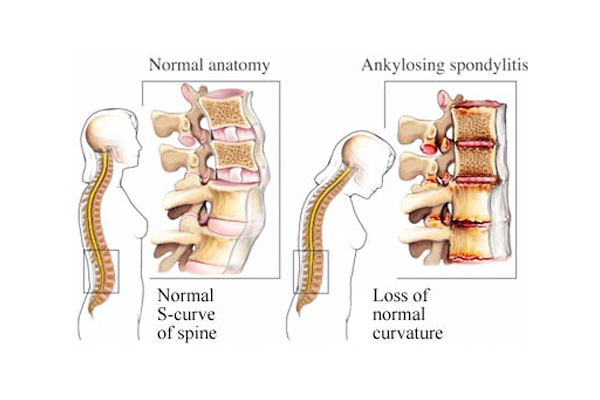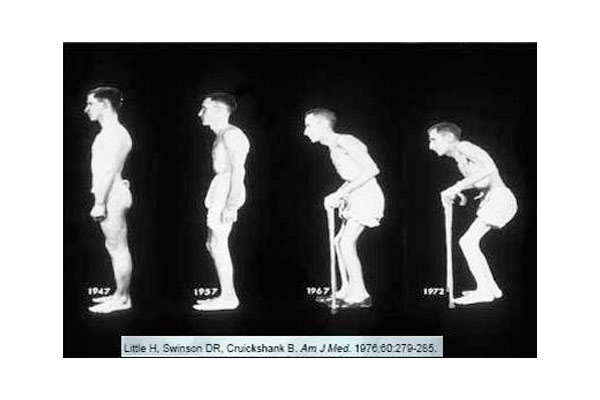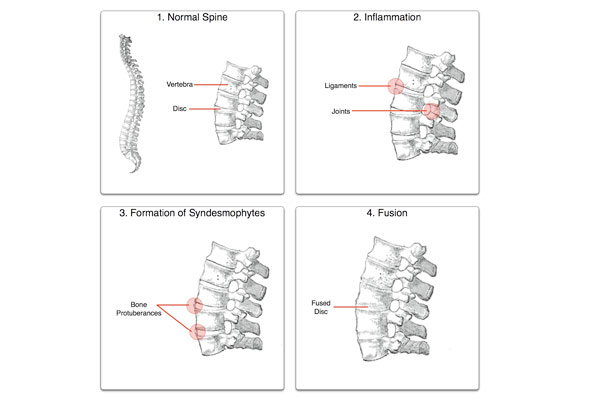Ankylosing Spondylitis (AS), a form of arthritis, primarily targets the spine, inducing inflammation in spinal joints (vertebrae) that results in intense, chronic pain. In advanced instances, this inflammation may prompt new bone formation, leading to spinal fusion and a fixed, immobile position, potentially causing a forward-stooped posture. AS manifests differently in individuals, emphasizing the need for comprehensive understanding and tailored care.
AS manifests differently in individuals, emphasizing the need for comprehensive understanding and tailored care.
Image 1 Image 2 Image 3



While the precise cause of Ankylosing Spondylitis (AS) remains elusive, genetics, particularly the HLAB27 gene, is a pivotal factor. Recent studies underscore the influence of additional genes and bacterial infections in AS development. Predominantly impacting males under 35, AS can affect females as well. Stay informed about this complex interplay of genetic and environmental factors shaping AS.
Initial signs of Ankylosing Spondylitis (AS) often include gradual onset of persistent pain and stiffness in the lower back and buttocks, typically over weeks or months.
Early recognition and tailored management are crucial for optimal outcomes.
Diagnosing Ankylosing Spondylitis (AS) relies on a combination of clinical history and pertinent investigations.
HLAB27 is a normal gene found in 8% of the population; however, only 5% of individuals with this gene develop Ankylosing Spondylitis (AS). In suspected AS cases, particularly in the early stages, the HLAB27 test proves valuable for an accurate diagnosis, aiding healthcare professionals in confirming the presence of this genetic marker and facilitating timely intervention.
Timely diagnosis of Ankylosing Spondylitis (AS) in patients with persistent low back pain is crucial. Early identification is paramount for initiating prompt management, preventing potential deformities in the spine. Detecting AS in its initial stages allows for effective interventions, improving long-term outcomes and enhancing the quality of life for individuals affected by this condition.
Early diagnosis and precise management are pivotal for Ankylosing Spondylitis (AS) patients to maintain a normal lifestyle.
Stay abreast of these evolving treatment options for optimal patient care
A favorable prognosis exists for individuals with Ankylosing Spondylitis (AS) when diagnosed early and managed effectively. Early intervention and appropriate treatment significantly contribute to patients leading normal, fulfilling lives. Regular monitoring, adherence to treatment plans, and proactive measures empower those with AS to maintain optimal health and well-being, underscoring the importance of timely and comprehensive care.
Welcome to our cutting-edge clinic, operating every Tuesday, where state-of-the-art facilities go beyond consultations. Our holistic approach includes
Our goal is to maximize medical attention for Ankylosing Spondylitis (AS) patients, striving for disease remission and improved quality of life in a cost-effective manner. Your well-being is our priority.
BASDAI (Bath Ankylosing Spondylitis Disease Activity Index):
ASDAS (Ankylosing Spondylitis Disease Activity Score):